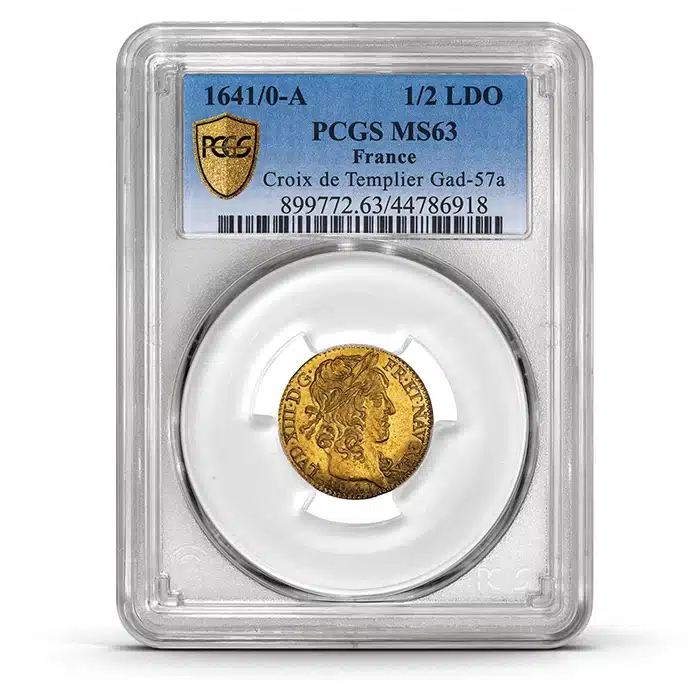
By Jay Turner for PCGS ……
What is better? The tried-and-true way practiced for centuries or a new way developed with new methods and technology? This debate certainly carries on with coin manufacturing. Beginning with the 1550s introduction of milled coins (coins made by a machine press), European countries wavered back and forth between milled and hammered (hand-struck) coining methods. This vacillation ended in 1641 with the demise of hammered production in favor of milled coining, creating some numismatic rarities in the process.
In March of 1640, the creation of a new coin, the Louis D’or, was implemented. This new denomination, which saw the production of three coins, including a half and a double Louis D’or, sparked a competition between two mints and their rivalry in two different minting methods. The Paris Mint, with Louis de la Croix as master, manufactured coinage with the traditional hand-hammered methods. The Monnaie du Moulin, or the new mint, with Jean Warin as the master, produced milled coins with machinery such as the screw press. The three gold denominations of the Louis D’or were produced by both mints. The coins were made in 1640 and 1641. Louis de la Croix employed two fine engravers for the endeavor: Jean Darmand Lorflin, who was the general engraver of the coinage of France, and Claude Ballin, the goldsmith of the King. With the two engravers, there are two different styles of 1640 Louis D’or coins from the Paris Mint, with the finer of the two designed by Darmand Lorfelin and the nicknamed “big head” bust by Ballin. For the Monnaie du Moulin, Jean Warin was the engraver.
When the Louis D’or coins were released to the public, those produced under Louis de la Croix were believed to be counterfeits. The general public in comparing the two saw the inconsistencies in the hammered coinage, with the differences in strike and planchet versus those produced with the milled machinery at the Monnaie du Moulin with its consistently well-made coinage. From this competition, the coins produced using the hammered method were banned in January 1641. By 1645, France ended its production of coins using the hammered method and adopted the milled coinage exclusively for its coin production.

The coins produced under Louis de la Croix are rare today. This is especially so with the issues of 1641 since they were banned in January of that year. These coins feature his cross, known as the Templar cross, a quick identifying method for the pieces. The 1641 ½ Louis D’or coins also feature an overdate, with the “1” being placed over the “0” of the date. Today, it is believed that maybe four examples of this coin still exist dated 1641. In 2022, the PCGS office in Paris, France, received an example of one of the 1641/0 ½ Louis D’or coins from Louis de la Croix, known as the Croix de Templier variety listed as Gad-57a. This coin was graded and certified by PCGS and achieved a grade of MS63.
This coin is a piece of history that tells the story of the transition for the manufacturing of coinage from hammered to milled, ending the way coins had been manufactured in the land of France for over 2,000 years. Missing from the Bibliotheque nationale de France (BnF) Collection, it is an incredibly rare and important coin.
* * *





